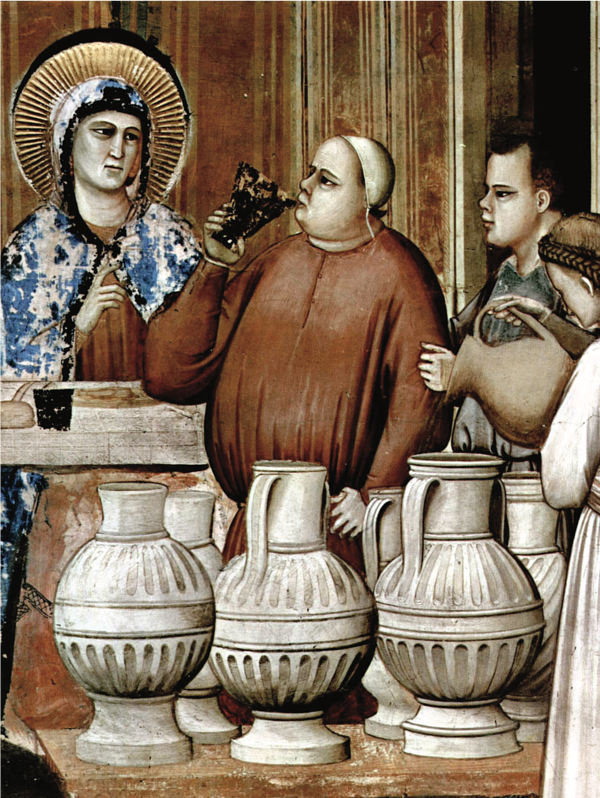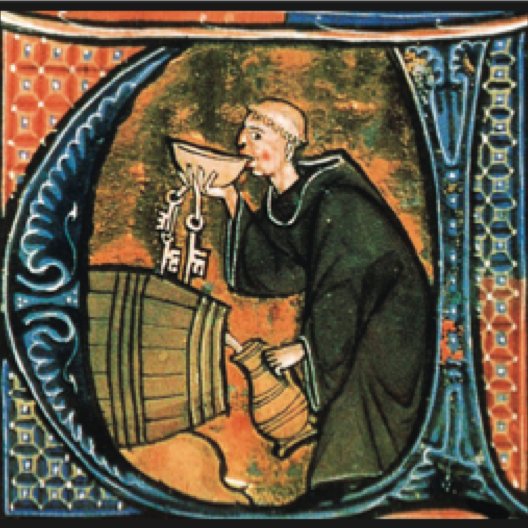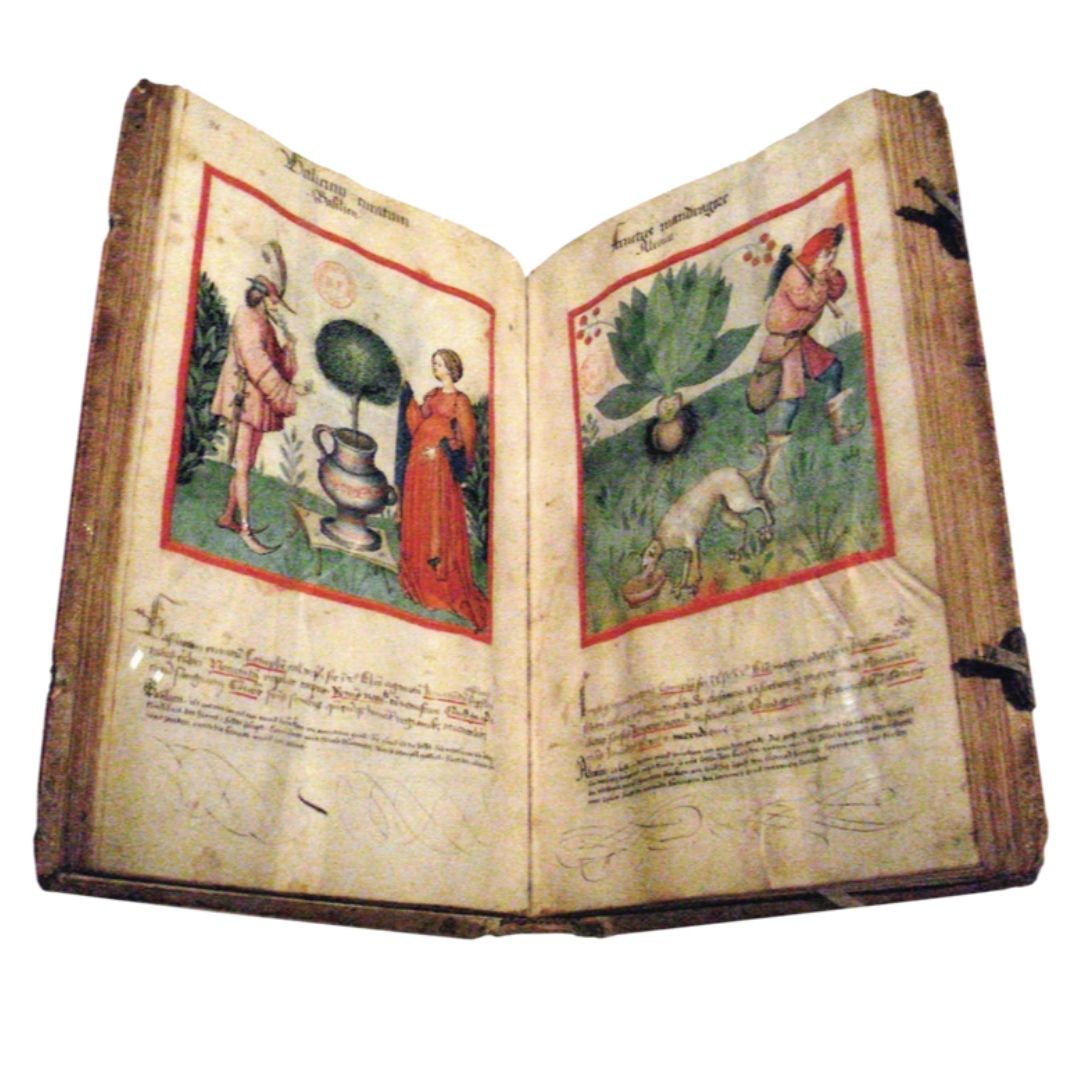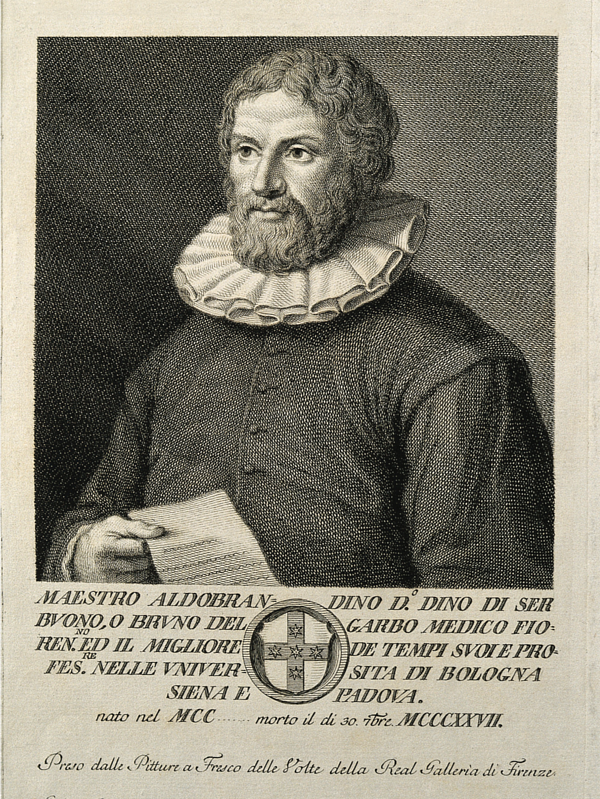by Pietro Stara
You can reread centuries of history using the lens of Bacchus’ nectar, which hence becomes the subject of speeches on and considerations of ancient and modern characters.
In the Middle Ages, the image of the world, the movement of the stars, the control of the oceans, the inhabited regions, and the primordial and constitutional elements of everything are all part of a single cosmological design with a divine imprint. Wine, and not in a minor way, participated in the creation of this design, as Umberto Eco wrote in The Metaphor in Medieval Latin: “Of the universe as a collection of marvellous facts, the Middle Ages received enthusiastic descriptions due to the pagan culture – from Pliny to the Polihistor of Solino, or from Alessandro’s Romanzo. It was nothing other than moralizing the encyclopaedia and assigning a spiritual meaning to every worldly object. And it is at this stage that the Middle Ages begins, on the model of the Physiologus, to elaborate its own encyclopaedias, from the Ethymologiae of Isidoro of Seville to De rerum naturis by Rabano Mauro, and De imagine mundi by Honorius of Autun, from De naturis rerum by Alessandro Neckam to De proprietatibus rerum by Bartolomeo Anglico and Specula by Vincenzo Belovacense. They were providing the correlation rules, always on the basis of tradition, so that they could assign a figurative meaning to any element of the furnishing of the physical world.”
The unbroken sequence of causes and effects defines the great chain of being: “Tempus mundi est umbra aevi (the world’s time is the shadow of eternity)”, wrote Honorius of Autun in the second book of De imagine mundi. If immortality can only be a divine attribute, it is a shared postulate that the periods in succession in the earthly world, in their finiteness, mirror those of the Other World. Honorius of Autun held that the six ages of the world, which are connected to the six hydras of water transformed into wine during The Wedding Feast at Cana, correspond to six different wines, “whose sweetness keeps growing as the project of salvation is perfected”, as Massimo Montanari relates in Tastes in the Middle Ages.

The products, the cuisine and the table. Sweet is a source of nourishment and of pleasure: with few exceptions all the surviving medieval literature agrees on this point. In his mighty Encyclopaedia, Bartolomeo Anglico speaks of wines that are sweet, biting and acute (doulce, poignate, agu). Sweet wine is the most agreeable and harmonious, associated with the element of heat, and it counters the sourness of vin aigre (vinegar), once- sweet wine whose natural warmth has waned. The Segré des segrez also explicitly distinguishes ‘douz’ (sweet) wine from sour, which can be defined tasteless (Yann Grappe, On the Trail of Taste. Wine history and culture in the Middle Ages).
Then it lists several sweet wines, which vary in taste, aroma and liquid matter: of these the best sweet wine must be clear and red (black and cloudy are negative traits) and its main function, inherited from Hippocratic dietetics, is as a post-convalescence tonic. Barely different is the opinion of Aldobrandino of Siena, who counsels harmony in wine between the sweet, bitter and green (sharp) flavours, that they be neither too strong nor too weak. Descriptive medieval lexicography recognises that the principal formation of taste comes from two interconnected worlds: gastronomy and dietetics.


Flavours are commonly associated with the active ingredients of the substances, hence, for example, bitterness is considered by ibn Butlan, an Iraqi doctor (around the year 1000), as not very nourishing, and a laxative: “Taste, then, understood as a sensory instrument, and the ‘tastes’ as the entirety of a person’s gustatory pleasures accumulate the functions of an instrument of awareness and guidance in terms of dietary choices.” The adequacy or inadequacy of a foodstuff is achieved through its flavour, which is the subject of taste.
Hence the Thomistic comment in Sentencia De sensu. “[...] The food procured nourishes in that it can be tasted; proven by the fact that all beings are nourished by sweetness, which is perceived by taste; either simply from sweet or mixed with other flavours – and not even here does it contradict the second book of De anima (II 5, 414b7), which holds that touch is the sense of food, because in that step Aristotle places humour - that is, flavour - as sensitive to touch, and in the same place, says that flavour is what gives delight to food, in that it indicates its convenience.” Hence, in the wake of Aristotelian thought, Thomas holds that “to every person’s taste, in short, sweet is pleasing; but some prefer the sweetness of wine and others that of honey or other things. However, the best and most pleasant sweetness must be, unquestionably, that which is most enjoyable to those who have the most refined taste.” (S. Th., I-II, q. 1, a. 7, co. L. 10). The hegemony of the sweet character in the quest for exquisite- ness in wine will continue for many centuries to come and, certainly, some trace of this wisdom is still present today in those biting, at times sparkling, wines found on the tables of many people.









